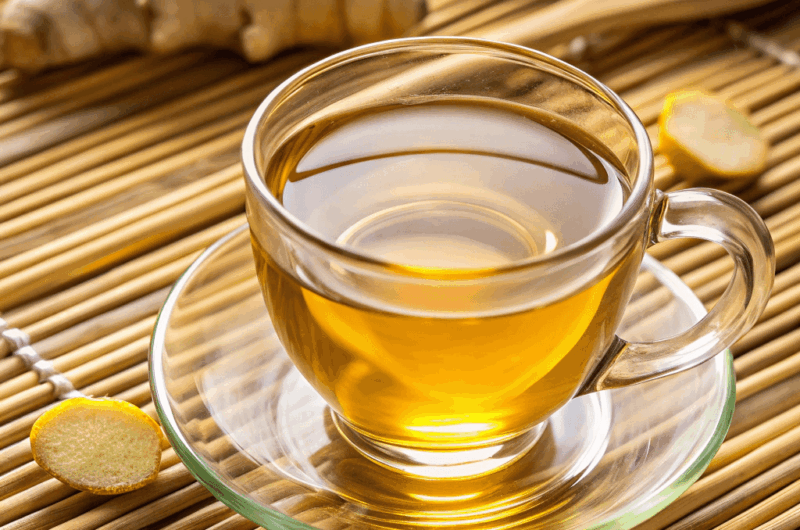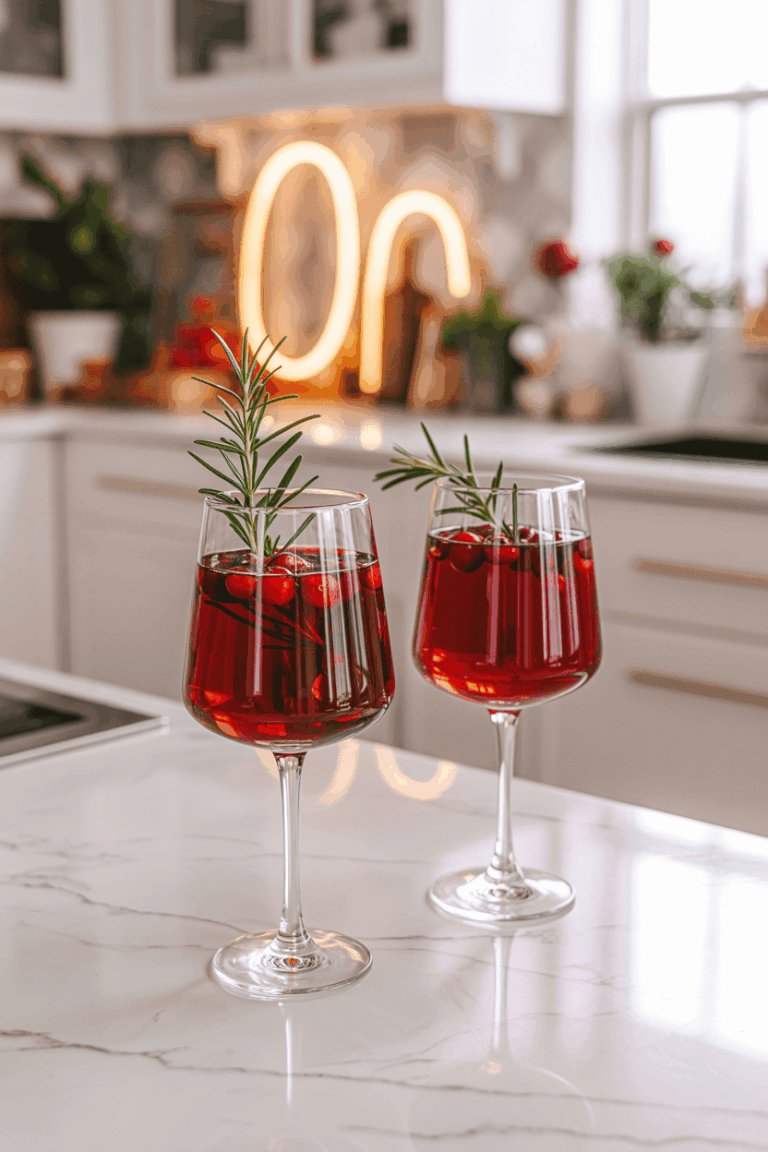The Best Fluffy Pancakes recipe you will fall in love with. Full of tips and tricks to help you make the best pancakes.
Sip & Soothe: The Cozy Ginger Tea You’ll Crave
It’s freezing outside, my mood is hanging by a thread, and my throat feels like I tried to gargle sandpaper for breakfast. Clearly, it’s one of those days—and that can only mean one thing: ginger tea time. But not just any tea. I’m talking about the real deal—bold, spicy, soul-hugging ginger tea that kicks your sinuses into gear and wraps your insides in a warm fuzzy blanket. Forget those dusty tea bags. This is the kind of brew that makes you feel alive and just the right amount of dramatic.
This recipe isn’t just about making tea—it’s about the whole cozy ritual. There’s something oddly meditative about slicing up that fiery root, watching the water bubble with purpose, and finally wrapping your hands around a mug like it holds all the answers. Whether you’re trying to kick a cold, soothe a sore throat, or just zen out in the chaos of your day, this tea’s got your back—and your sinuses.
Grab a blanket, crank up the kettle, and let’s dive into this spicy little masterpiece.
Recipe Snapshot
| Category | Details |
| Yield | 2 servings |
| Serving Size | 1 cup |
| Prep Time | 5 minutes |
| Cook Time | 15 minutes |
| Total Time | 20 minutes |
| Calories per Serving | 10 |
| Primary Cooking Method | Simmering |
| Occasion | Everyday, Cold Relief |
| Diet Type | Vegan, Gluten-Free |
Calories are approximate and may vary depending on exact ingredients used.
Ginger Tea Recipe
Course: BeverageCuisine: GlobalDifficulty: Easy1
cup5
minutes15
minutes10
kcalThis ginger tea recipe is like a spa day in a mug—zingy, soothing, and totally customizable. It’s the kind of drink that warms your chest and whispers, “You’re doing great, sweetie.” Whether you’re into bold simplicity or want to toss in lemon, cinnamon, or a turmeric twist, this tea is your new comfort ritual.
It’s warm, it’s bold, and it’s just spicy enough to kick that sluggish mood to the curb. Seriously, one sip of this stuff and you’ll feel like you can do your taxes, climb a mountain, or at least finally answer that email you’ve been avoiding.
Ingredients
- Basic Ginger Tea
2½ cups water
2-inch piece of fresh ginger root (about 2½ tablespoons when chopped)
- Optional Add-Ins
1 slice of lemon (or 1 teaspoon lemon juice)
1 cinnamon stick
¼ teaspoon ground turmeric
1 teaspoon honey or maple syrup (or to taste)
Directions
- Prep the Ginger
Start by washing your ginger thoroughly. No need to peel if it’s organic—just scrub off any dirt. Chop it roughly into small pieces. You want about 2½ tablespoons of chopped ginger. The smaller you chop it, the more flavor you’ll get. - Bring to a Simmer
In a small saucepan, add your 2½ cups of water and the chopped ginger. Bring it to a gentle boil over medium heat, then reduce to a simmer. Let it simmer uncovered for about 15 minutes. Longer simmer? Stronger flavor. Short on time? 10 minutes will still do wonders. - Flavor It Up
Once your tea has simmered and the kitchen smells like a spa, it’s time to personalize. Add a cinnamon stick or a pinch of turmeric while it’s still on the heat for extra warmth and a golden hue. Feeling zesty? Drop in a lemon slice or squeeze in some juice. - Strain and Serve
Remove from heat. Strain the tea into mugs to catch all the ginger bits (unless you like chewy surprises—no judgment). Taste it. Add a teaspoon of honey or maple syrup if you need a little sweetness. - Sip and Glow
Wrap your fingers around the mug. Breathe in that gingery steam. Sip slowly. Feel that cozy burn at the back of your throat? That’s self-care in a cup.
Extra Tips
- Peeling is optional: No need to peel the ginger if you’ve scrubbed it well and it’s organic. Saves time and still tastes amazing.
- Adjust to your taste: Want more zing? Add more ginger. Prefer it mellow? Simmer for a shorter time or use a smaller piece.
- Double up: Make extra and store it in the fridge so you’re never more than 30 seconds away from a warm-up.
- Use leftovers smartly: Toss strained ginger pieces into smoothies or stir-fries for zero waste flavor boosts.
- Chill it out: Serve it iced with a splash of lemon on hot days for a homemade herbal refresher.
Equipment List
- Small saucepan
- Knife
- Cutting board
- Fine mesh strainer or tea strainer
- Measuring cups/spoons
- Mugs
Ginger Tea Variations
Want to change up your plain ginger tea? Here are a few easy variations that bring their own vibes and benefits.
Ginger-Cinnamon Tea
For more warming spice and a comforting aroma, add a cinnamon stick to your tea before bringing it to a simmer. It’s like a hug in a cup.
Ginger-Turmeric Tea
Looking for an anti-inflammatory boost? Toss in some fresh turmeric slices—just treat it the same way you handle ginger. You’ll get a golden hue and a slightly peppery kick that feels just a bit magical.
Ginger-Mint Tea
Need a little balance? Add a few sprigs of fresh mint before simmering. The mint brings a cooling contrast that makes the ginger feel even more invigorating. Perfect for when you need both a pep and a pause.
Make-Ahead Tips
Got a packed schedule or just like to have your comfort drinks on standby? This ginger tea is totally make-ahead friendly. Brew a larger batch when you have the time, then stash it in the fridge for up to five days. Just strain it first so it’s ready to pour and go. When you’re craving a mug, warm it gently on the stove or in the microwave—add any citrus or sweetener after reheating for the freshest flavor. You can even enjoy it chilled over ice for a zingy, refreshing twist.
Benefits of Ginger Tea
Sure, it tastes amazing—but ginger tea isn’t just a flavor bomb in a mug. It’s a health hero too.
Soothes upset stomachs: Ginger tea has a long-standing rep for helping with nausea, morning sickness, and even motion sickness. Just a few sips can calm that twisty stomach.
Boosts digestion: Thanks to a compound called gingerol, this tea speeds up your digestion and keeps things moving comfortably.
Reduces inflammation: Ginger’s natural anti-inflammatory properties make it a great choice for reducing soreness and supporting overall wellness.
It’s basically a superhero: Ginger has antioxidant, antimicrobial, and anti-inflammatory powers that science actually backs up. It’s been traditionally used to help with colds, flu, pain, and more.
Possible long-term perks: Studies are exploring how ginger might help with conditions like high blood pressure, cholesterol, diabetes, and even neurodegenerative diseases like Alzheimer’s and Parkinson’s. It’s not a miracle cure, but sipping on this spicy brew certainly doesn’t hurt.
Storage Instructions
Fresh ginger tea is best when it’s, well, fresh—but don’t worry, you can totally store and freeze it too.
Pour any leftover tea into a tightly sealed container or mason jar and pop it in the fridge. It’ll stay delicious for up to 5 days. Just give it a good shake or stir before reheating, since some of the good stuff may settle at the bottom.
Want to keep it even longer? Pour the tea into an ice cube tray and freeze. Once frozen, transfer the cubes to a zip-top freezer bag and store for up to a month. Just toss a cube or two into a mug with hot water whenever you need a ginger boost.
FAQ
Can I make ginger tea without fresh ginger?
Technically, yes—but it won’t be the same. Ground ginger or ginger powder doesn’t pack the same punch as fresh. You’ll miss out on those vibrant oils and spicy depth. But in a pinch, use ¼ teaspoon ground ginger per cup of water, and strain well.
How often can I drink ginger tea?
You can sip it daily! Most people tolerate 1–3 cups per day just fine. In fact, regular consumption may actually support digestion and immunity. Just check with your doctor if you’re on medication or have health conditions, especially gallstones or bleeding disorders.
Can I drink ginger tea on an empty stomach?
Absolutely. Many people drink it first thing in the morning to wake up their digestion and start the day off soothed and refreshed. If you have a sensitive stomach, though, pair it with a light snack.
Is it safe during pregnancy?
Yes, in moderation! Ginger tea is often recommended for morning sickness relief. But don’t go overboard—1 to 2 cups a day should be safe. As always, consult with your OB-GYN to be sure.
Can kids drink it?
Yep! Ginger tea is generally safe for kids when lightly brewed and unsweetened or naturally sweetened. Just serve it warm, not hot, and avoid extra strong brews.
Nutritional Information
Here’s the nutrition breakdown for one serving (1 cup) of plain ginger tea made with just water and fresh ginger:
- Calories: 10
- Carbohydrates: 2g
- Sugars: 0g
- Fat: 0g
- Protein: 0g
- Fiber: <1g
- Sodium: 0mg
These values are approximate and based on standard ingredients. Sweeteners like honey or maple syrup will add calories and sugar, while lemon or turmeric may contribute trace nutrients. Even with add-ins, it’s still a guilt-free, nourishing sip you can feel great about.
Serving Suggestions
Ginger tea is your all-day-any-time kind of drink. Serve it hot first thing in the morning to kickstart your digestion, or cozy up with it in the evening when you’re winding down.
Pour it into your favorite oversized mug, curl up with a blanket, and sip slowly—it’s basically a warm hug in liquid form. Hosting guests? Serve it in clear mugs with a lemon slice or a cinnamon stick for a spa-chic vibe.
Feeling fancy? Try it chilled over ice with fresh mint leaves on a sunny afternoon. Or use it as a base for cocktails and mocktails when you’re feeling a little experimental. However you serve it, this tea’s gonna shine.

Final Thoughts
Ginger tea isn’t just a drink—it’s a mood, a vibe, a daily ritual you didn’t know you needed until you tried it. It’s simple to make, endlessly customizable, and packed with feel-good benefits that actually deliver.
Whether you’re looking to soothe a sore throat, ease digestion, or just treat yourself to a warm cup of comfort, this tea does it all. Plus, there’s something deeply satisfying about brewing your own cozy elixir from scratch.
So go ahead—chop that ginger, let it simmer, and sip your way to better days. You deserve it.


